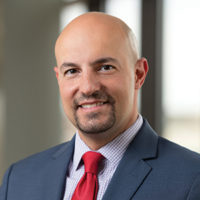Neurostimulation therapy uses electricity (neurostimulator) to disrupt the activity of nerves that transmit pain signals. It is used to treat chronic pain, such as low back pain or neck pain, that has lasted 12 weeks or longer and is not helped by other treatments. Neurosurgery One’s Denver spine surgeons offer several different types of minimally invasive neuromodulation treatment options, including spinal cord stimulation and peripheral nerve stimulation .
Neurostimulation therapy does not eliminate chronic pain completely. The treatment does not address the source of the pain – it merely interrupts pain signals on their way to the brain. If your pain is the result of a physical problem, most doctors will recommend treating the pain’s source first. Typically neurostimulation reduces pain by 50-75%, and treatment is considered successful if pain is relieved by at least 50%. Neuromodulation therapy for chronic pain is only used for patients whose conditions have not improved with other treatments. Unlike traditional neuromodulation, rehabilitative neurostimulation does target the root muscle and aims to reactivate it to reduce or eliminate pain.
Learn more about Neurosurgery One and our approach to back and neck pain
FAQ About Neurostimulation Therapy
Continue reading below to learn more about neurostimulation therapy or click on one of these links to go directly to the information you are interested in.
- Are neuromodulation and neurostimulation therapy the same thing?
- What are types of neurostimulation therapy offered in Denver?
- Are neurostimulation therapy and PNS the same thing?
- How are peripheral nerve stimulation and TENS different?
- What is the difference between neurostimulation therapy and responsive neuromodulation?
Conditions Treated with Neurostimulation Therapy
Are neuromodulation and neurostimulation therapy the same thing?
Neuromodulation provides targeted therapy to specific sites of the body to relieve pain, control movement or alter body patterns that are directly connected to the nervous system. Neurostimulation therapy is a type of neuromodulation that utilizes electrical pulses to interrupt signals in various parts of the nervous system.
What are types of neurostimulation therapy offered in Denver?
Neurostimulation therapy varies based on your pain needs. Once type of therapy is offered over-the-counter as a conservative treatment approach:
- Transcutaneous electrical nerve stimulation (TENS) delivers electrical currents to the affected nerve via electrodes that are placed outside the body on the skin. Also known as TENS unit, this type of neuromodulation has been effective for some patients with arthritis and joint pain including knee pain. TENS units can be purchased online or in stores without a physician’s prescription.
For patients who cannot find relief with more conservative approaches, there are several different types of neurostimulation therapy offered by Neurosurgery One in Denver, including these that may help with chronic pain, particularly back and neck pain:
- Temporary peripheral nerve stimulation (PNS) like Sprint PNS is a non-surgical, non-permanent treatment for leg, neck, arm and back pain. PNS interrupts pain signals sent to the brain from nerves located outside the brain or spine, known as peripheral nerves.
- Spinal cord stimulation (SCS) sends electrical impulses to nerves in the spinal cord that are causing pain. SCS has been effective in combating chronic pain caused by a variety of conditions including injury, back and neck pain, post-surgical pain, and more.
- The ReActiv8 procedure is a form of rehabilitation neuromodulation that provides relief of mechanical pain, which results from damage or stress to non-neural tissue like muscles, ligaments or joints. Rehabilitative neurostimulation delivers tiny electrical impulses to the underlying muscle dysfunction behind mechanical chronic low back pain, helping the muscle activate again.
Neurostimulation therapy is also used for a variety of movement disorders, like Parkinson’s disease and epilepsy. Neurosurgery One offers the following types of neuromodulation for movement disorders:
- Vagus nerve stimulation (VNS) is a minimally invasive procedure for epilepsy patients in which regular, mild electrical pulses are sent to the brain to control seizures.
- NeuroPace is a form of responsive neuromodulation that can reduce the frequency of seizures. The implanted NeuroPace device automatically detects unusual brain patterns and sends electrical pulses to interrupt seizure activity.
- Denver asleep deep brain stimulation (DBS) utilizes a pacemaker-like device that is implanted under the skin to deliver tiny electrical signals into one of three target areas of the brain that control movement: Subthalamic Nucleus-STN; Globus Pallidus pars interna-GPi; and Ventral Intermediate Nucleus of the Thalamus-Vim. While effective for movement disorders like Parkinson’s disease, essential tremor, epilepsy and dystonia, DBS has also been proven effective for obsessive-compulsive disorder (OCD).
Neurostimulation therapy has also been highly effective in controlling sleep apnea. The Inspire sleep therapy involves an implanted device that is turned on by the patient before going to sleep. Once activated, the device sends mild, undetectable stimulation to keep airways open.
Are neurostimulation therapy and PNS the same thing?
Peripheral nerve stimulation (PNS) is a type of neurostimulation therapy. With PNS, electrical signals are sent to peripheral nerves, meaning nerves located outside the brain and spine, to control pain signals.
How are peripheral nerve stimulation and TENS different?
Peripheral nerve stimulation (PNS) and transcutaneous electrical nerve stimulation (TENS) differ mainly in how they deliver the stimulation. TENS is an external system that adheres electrodes to the skin to deliver electrical currents to the affected nerve. PNS is an internal system (which can be used temporarily or long term) delivers electrical pulses via a thin wire that is placed inside the body as close to the nerve that is causing pain.
What is the difference between neurostimulation therapy and responsive neuromodulation?
Neurostimulation therapy and responsive neuromodulation both use electrical signals, delivered via a neurostimulator, to alter activity of the nerves, brain, or airway.
Responsive neuromodulation such as NeuroPace responds to irregular brain activity. Much like a pacemaker detects heart beats, responsive neuromodulation automatically sends tiny electrical pulses to the brain when irregular brain activity occurs. With this treatment, the patient is usually unaware of when the implanted generator is sending electrical signals.
Other forms of neurostimulation therapy such as spinal cord stimulation and Inspire sleep therapy send routine electrical signals, rather than only sending electrical pulses when irregularity is detected.
Reviewed by Dr. Jason Peragine, MD, a Littleton physiatrist who is board certified in physical medicine & rehabilitation as well as pain medicine. Dr. Peragine specializes in interventional pain management procedures, including neurostimulation therapy.









